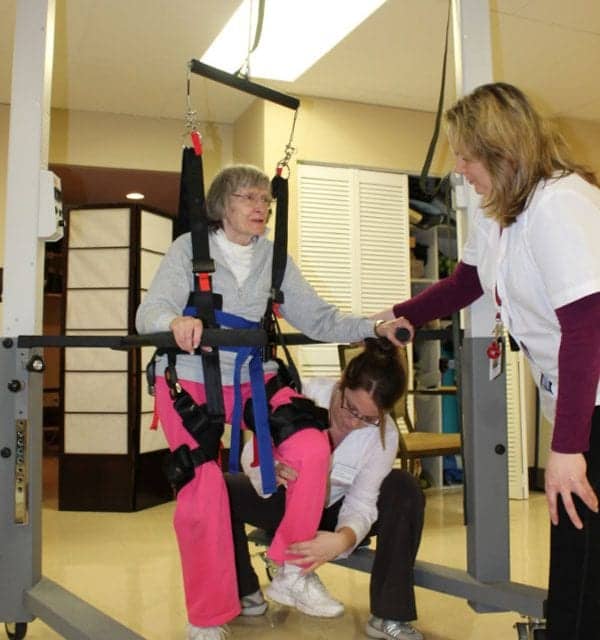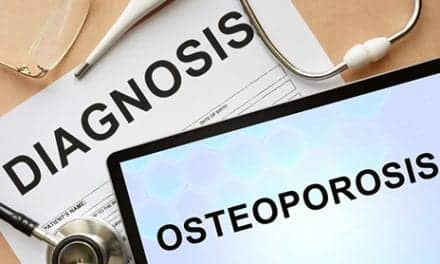In an ever-evolving healthcare industry, rehab professionals must stay competitive with the latest tools and knowledge to address stroke and neurological disorders.
As most clinicians know, there are many causes of neurological disease, including genetic, environmental, brain, and spinal cord injury. One of the most common neurological disorders caused by brain damage is known as cerebral vascular accident (CVA) or stroke. Cardiovascular disease is at the root of this type of brain injury. It negatively impacts the brain in one of two ways: blood vessel blockage (or ischemia) and bleeding in the brain. According to the CDC, ischemic events make up 87% of strokes, and strokes are responsible for 130,000 American deaths each year: approximately one out of every 19 deaths.1
Although most well-known, stroke is only one of many neurologic diseases. According to Medline Plus, more than 600 neurologic diseases exist.2 Degenerative neurologic diseases, such as Parkinson’s disease (PD), result when nerve cells die. Unlike stroke, the cause of PD is not known. What is known is that cells in the basal ganglia are affected by depleting dopamine, thus negatively impacting movement. According to the Parkinson’s Disease Foundation, PD is a progressive neurological disease that affects about 1 million Americans. Approximately 60,000 are diagnosed each year. For rehabilitation professionals, reading statistics can be informative; however, sending a client home after stroke rehabilitation or exacerbation of Parkinson’s disease, at the client’s prior level of function, is nothing less than empowering: an affirmation of our skills and dedication as therapists. So, if your rehabilitation clinic is not one of the 400 certified centers for stroke rehabilitation, what tools and knowledge do you need to successfully treat your clients and keep a competitive edge?
GUIDED BY RESEARCH
Certainly as healthcare professionals, we are responsible not only for knowing about these neurological disorders, but also for assisting in recovery of lost function. In fact, stroke rehabilitation is a term coined to represent just that: treatment provided by therapists to promote optimal functional level. Therapeutic interventions that focus on restoring functional skills of individuals with various forms of neurological problems have been part of the scope of practice of physical therapists for decades. When it comes to an evidence-based rehabilitation model, research guides us in selection of the most appropriate modalities and treatment techniques to impact clients’ recovery. There is moderate evidence that very early mobilization following stroke helps to reduce medical complications, improve functional recovery, and decrease the time to achieve functional walking.1 Many clinicians know that constraints such as limited staffing, client’s impaired strength, and client’s fear may interfere with an optimal rehabilitation program. This is where body weight-supported (BWS) treadmill training systems can have strong utility. These systems have been around for more than a decade and have proven to be beneficial.
Virtual reality training is a fairly new technology that also is being studied for training of stroke patients. A virtual reality program would have to be task specific to yield positive results. One study used a virtual program of the Mass Transit Railway to improve negotiation of the railway system during stroke rehabilitation training with proved effectiveness.3 Additionally, there is evidence that suggests functional electrical stimulation (FES) combined with gait retraining can improve gait performance.
SUPPORTING STRUCTURES
Restoring gait and improving functional mobility are key aspects of stroke rehabilitation. Gait retraining has been evolving and has seen great changes in the last decade. Use of body weight-supported treadmill training (BWSTT) has become increasingly popular. Nowadays, at least one of the popular BWSTT systems is used in stroke rehabilitation clinics. Research has shown that a greater gain in independent walking ability is seen in hemiparetic stroke patients who participate in structured speed-dependent treadmill training compared to conventional training.4,7,8 Not only do clients who participate in BWSTT training have better results, but the effects have been proven to last.5 In our facility, we find that a combination of task-oriented training using BWSTT and high repetition yields optimal results. We utilize one of the popular BWS regularly. This machine uses a harness and assists the client into standing position. Once standing, the client performs gait training on level surfaces and/or on the treadmill as indicated by plan of care.
Although BWS are perhaps most commonly associated with the treatment of stroke patients, these systems are very helpful when treating movement disorders, such as PD. In one of our cases, 76-year-old Anna Marie was struggling with exacerbation symptoms of PD. She has lived with Parkinson’s for 15 years. Anna Marie presented for skilled physical therapy with an increase in gait instability and a decrease in bilateral swing through, as well as freezing of gait at initiation, turning, doorways—the full gamut. She gracefully settled into a chair from about four steps away, as her feet froze while approaching the seat. Gait training was one of her goals, specifically to increase weight shifting and trail limb position, and thus minimize freezing. She was training using our BWS at a high intensity (for her) speed of 4.7 miles/hour with 10% of body weight supported, repetitively. After 2 weeks of training, she improved gait cadence, scored 18 seconds on the Timed Up and Go (TUG) using no assistive device, and minimized her freezing to only crowded, stressful environments. The main focus of specialized body weight-support devices and treadmills is to allow high intensity, repetitive practice of gait, which in turn has been shown to improve gait cadence and symmetry as consistent with principles of neuroplasticity. Many clinical studies have shown the human brain is plastic, which is to say “neuroplastic.” This allows certain therapeutic activities to create new connections in the brain, bypassing areas affected by the acute stroke, and result in improvement of functional mobility for the client who has suffered a stroke.
Another well-researched area in stroke rehabilitation has been use of functional electrical stimulation devices to optimize gait in chronic stroke clients. According to an article written by Bosch et al,6 “Ankle dorsiflexion weakness that impedes walking affects some 30% of people after a stroke, which increases the risk of falls and mortality.” Use of FES, to reduce effects of foot drop, targets the peroneal nerve. By stimulating this nerve, clients have improved gait patterns, confidence, and functional walking cadence. Unfortunately, as we have seen in practice, many insurance providers do not cover the cost of these products for their beneficiaries.
ESTABLISHING A BASELINE
Therapists are the cranes that construct a creative pyramid of therapeutic activities to encourage neuroplasticity in their clients. Clinical expertise and skills are paramount in providing optimal care to clients; however, no less important is the written plan of care and of treatment. Most therapists have solidified their standardized “tool box” to use for outcomes measures. Backed up by NIH as well as our professional organization, using standardized measures when establishing a baseline and measuring progress of clients are no longer an option, it’s a must. For example, ours contains tests such as Timed Up and Go, Dynamic Gait Index, Brief Best Test, Functional Gait Assessment, as well as many others. To test balance impairment, consider using Tinetti Falls Efficacy Scale, Functional Reach, or BEST Test. Gait impairment assessment can be volatile in stroke patients and clients living with Parkinson’s disease. Further classification of velocity can be obtained from the 10-meter test or 2 or 6 minute walk test (MWT). For strength test, consider a 30-second sit to stand test, a 30-second arm curl test, or a dynamometer measurement. Many more tests exist and are easily located online through a search engine.
In order for clinicians to quantify progress, using tests such as pressure mapping and test plates can be optimal. One such pressure mapping system uses special technology to quantify the amount of pressure between two objects. These measurements allow clinicians to predict risks for skin compromise and determine optimal wheelchair positioning. For many stroke survivors, who utilize a wheelchair, choosing the right seating surface is paramount. These systems allow for doubt-free cushion prescription.
Another example of advanced technologies available for data gathering is test plates. Most products that are used for data gathering also are used to establish optimal treatment protocols and provide treatment. They include software that tracks measurements and provides suggested modifications in exercises to maximize outcomes. According to the manufacturer, one of these platforms is equipped with force sensors, allowing investigation of balance by its center of pressure, and conducting adapted therapy sessions with real-time biofeedback. Another popular balance plate is reported to be the only system to improve balance, increase agility, and develop muscle tone.
CALLING ALL LEADERS
As healthcare continues to evolve at a fast pace, skilled rehabilitation professionals are nudged to stay competitive with the latest tools and knowledge available to us. Working with clients who have a neurological disorder is a rewarding challenge for many clinicians, but clearly this task is not straightforward or cookie-cutter. Lean management, team diversification, reimbursement review, RUG maximization, stroke rehabilitation, ARD management, authorization, and sometimes even denial audits are tasks all too familiar to most rehabilitation clinicians and managers, but it was not always this way. Before the Prospective Payment System (PPS) was instituted in the 1990s, therapists wore only a clinical hat. Nowadays, the best rehabilitation teams know how to do it all. They have the best tools for baseline measurements, they know the most up-to-date evidence treatment techniques, and they understand the importance of optimal documentation to validate all the utilized resources. After all, stroke rehabilitation is a specialty only therapists have. RM
Viktoriya Friedman, MSPT, is a Regional Director of Rehabilitation Services at VestraCare. Prior to assuming this role in 2014, she worked as a director of rehabilitation services at Susquehanna Nursing and Rehabilitation Center for 8 years. During her career, Friedman has focused on operational management of rehabilitation departments, growth of direct rehabilitation teams, Medicare compliance, clinical reimbursement, and advocating for people living with Parkinson’s disease. She assisted with implementation of a SNF-based telemedicine program in her region, partnering with the University of Rochester to maximize care of clients and community members living with movement disorders. In 2012, these developments were recognized by NYSHFA with an Innovative Practice Award. For more information, contact [email protected]
References:
1. Kochanek KD, Xu JQ, Murphy SL, Miniño AM, Kung HC. Deaths: final data for 2009. Natl Vital Stat Rep. [PDF-241K] 2011;60(3).
2. Medline Plus: http://www.nlm.nih.gov/medlineplus/neurologicdiseases.html
3. Lam YS1, Man DW, Tam SF, Weiss PL.Virtual reality training for stroke rehabilitation. NeuroRehabilitation. 2006;21(3):245-53.
4. Visintin M, Barbeau H, Korner-Bitensky N, Mayo NE. A new approach to retrain gait in stroke patients through body weight support and treadmill stimulation. Stroke. 1998;29:1122-1128.
5. Duncan PW, Sullivan KJ, Behrman AL, et al; LEAPS Investigative Team. Body-weight-supported treadmill rehabilitation after stroke. N Engl J Med. 2011;364:2026-2036.
6. Bosch PR, Harris JE, Wing K, et al; American Congress of Rehabilitation Medicine (ACRM) Stroke Movement Interventions Subcommittee. Review of therapeutic electrical stimulation for dorsiflexion assist and orthotic substitution from the American Congress of Rehabilitation Medicine Stroke Movement Interventions Subcommittee. Arch Phys Med Rehabil. 2014;95(2):390-6. doi: 10.1016/j.apmr.2013.10.017. Epub 2013 Nov 6.
7. Ada L, Dean CM, Morris ME, Simpson JM, Katrak P. Randomized trial of treadmill walking with body weight support to establish walking in subacute stroke. The MOBILISE trial. Stroke. 2010;41:1237-1242.
8. Pohl M, Mehrholz J, Ritschel C, Ruckriem S. Speed-dependent treadmill training in ambulatory hemiparetic stroke patients: a randomized controlled trial. Stroke. 2002;33(2):553–558.





